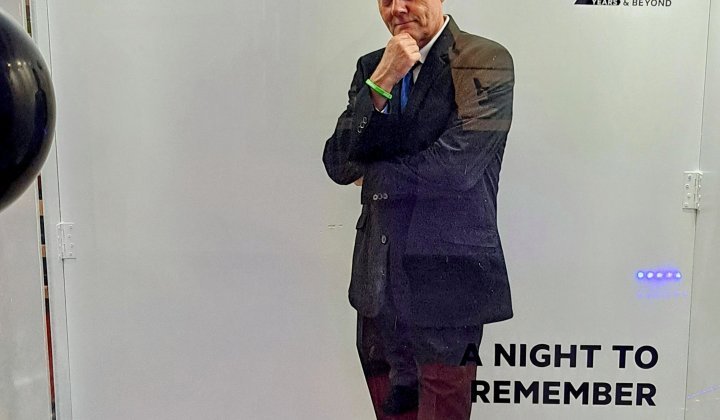For 17 years, Setlogane Manchidi, head of corporate social investment (CSI) at Investec South Africa, has built and embedded a strategic approach to CSI that aligns with the Investec core business strategy. For those seeking a recipe, Manchidi shared his question-based approach to crafting an effective, long-term CSI strategy in his book Corporate Social Investment: A Guide to Creating a Meaningful Legacy.
In 2018, when the book was published, it met with a positive response from the likes of educationalist Professor Jonathan Jansen, who noted that it “should be required reading by every CSI practitioner in Africa and abroad – much time, money and energy could be saved”. The same year, during a Trialogue CSI forum, it was noted that “the most common reason for companies exiting projects was lack of strategic fit”.
Strategy, along with defined objectives, focus, synergistic partnerships and internal buy-in all form part of Manchidi’s approach, but embedding this thinking within Investec didn’t happen overnight. It took two years before a common vision for doing good by “supporting initiatives that enable people to become active economic participants in society” was embraced across the business.
In a newly-published GIBS case study, Manchidi explains how then-chief executive Stephen Koseff ensured access to key executives and top management teams to sell the vision and gain “acceptance and enthusiasm for Investec SA’s social development efforts”. As Manchidi told Acumen, this was a demanding period, but looking back from the vantage point of the Covid years, Manchidi admits “those two years are really paying off now”.
Start with a clear vision
For Manchidi, strategic CSI must always start with vision. “You always hear people say, ‘I want to make a difference’. But when I ask them what kind of difference they can’t define it,” he says. It takes time to define a clear vision and purpose, but this is absolutely critical to building a CSI strategy, he believes.
Furthermore, Manchidi takes it further by creating space for independent reviews and input to help measure and evaluate impact, which in turn enables the constant refinement of projects in line with the overall vision.
Maintain focus
While calling the expectation that any single entity can solve all the world’s problems “unrealistic, unfair and unachievable”, Manchidi notes that by staying on course and aligned to the stated vision it is possible to “hone in and become very deliberate and intentional about the context and where you are best positioned to make a difference”. This is the polar opposite of the “spray and hope and pray” attitude, which is evident in less structured CSI efforts.
“You cannot be everything to everyone,” stresses Manchidi. “When you get approached 101 times and you can only respond 51 times, you’ve got to think carefully and strategically about the best ways in which to achieve the opportunity cost of CSI.”
Long-term thinking
For Manchidi, a long-term approach that considers issues of sustainability and succession helps a CSI division to deal with the constant demands, not all of which they can undertake. Adopting a forward-looking view that is deeply aware of the context, country and the specific social needs has far more likelihood of achieving the desired impact. That said, it is always necessary to remain flexible.
“Of course, we’ve got to respond to aspects of the here and now, but we’ve always got to contextualise it. That is why I say be clear on the vision you want to make and the difference you want to make, because it forces you to think ahead,” he says.
Be context-cognizant
While corporates may prefer the word "nimble", Manchidi feels that in the CSI context it is better to “talk about being adaptive and being responsive”. He also believes any response to a changing world must be led by “what is happening around you, by the use of data and observation”. He explains, “You can’t have blinkers on, particularly because we are not dealing with science. We are dealing with people, and because of that anything is possible in the context in which we operate. So be very, very adaptive, be responsive, and be open to being persuaded by facts and data."
Even if you shift – as was the case with Investec’s Promaths education programme in 2020 (see sidebar) – this doesn’t mean you’ve changed course, he stresses. It just means you are paying attention to shifts and spotting new ways of increasing your engagement and creating opportunities. Specifically referring to Promaths’ move into the online space, Manchidi says, “We may have changed the way we reach our people and engage, but the broader strategy hasn’t changed.”
Be measured
The nature of CSI makes it easy to focus on anecdotal, good-news stories and heartfelt calls to action rather than cold, hard facts, but Manchidi contends that “if ever there was a place where we run the risk of not wanting to apply a measured, impact-driven approach it’s CSI”. However, a strategic approach welcomes deliberate measurement.
Manchidi recalls that in August 2022 Investec’s chairperson, Philip Hourquebie, was on a roadshow with shareholders and the Promaths story featured prominently in his presentation. “He was talking factually about Promaths, drawing on the numbers, to show that we’ve reached the point where the programme is an easy plug-and-play for anybody to come on board,” explains Manchidi, who adds that subsequently a shareholder approached him for an exploratory engagement . The reason? “Because he got a sense from the discussions that Investec CSI’s approach was calculated and that the thinking behind it was well structured and logical.”
For Manchidi, this is what differentiates strategic CSI from the pack: the willingness to be measured and to be guided by those insights and data. For a profession where saying "no" is regrettably part of the job, drawing on strategic thinking makes it possible to make hard decisions without losing heart.
The inspiring case of Promaths
Early in 2022 a case study on Investec South Africa’s Promaths education programme was published by Ivey. The authors, GIBS faculty Dr Jill Bogie and independent writer and researcher Cara Bouwer, worked closely with Investec’s head of CSI, Setlogane Manchidi, the protagonist in the case.
In "Investec South Africa CSI: Harnessing Crisis to Scale Up Delivery and Impact", students meet Manchidi at his home office in Johannesburg. It is April 2020 and the world is scrambling to make sense of a global pandemic, social distancing and lockdowns. However, Manchidi has already done the hard work of embedding a strategic approach to CSI and is able to leverage existing partnerships, talent pipelines, and digital evolutions to ensure that any adaption is aligned with Investec CSI’s vision.
Framed as an opportunity to explore how a Theory of Change approach can be aligned with a company’s core business strategy to develop CSI initiatives with the potential to make a meaningful contribution to addressing societal needs, the case is a meaty read for students of strategic change, change leadership and the agile art of adapting in times of crisis or disruption. Leveraging partnerships and clear digital business strategy to build capacity, to scale up and to boost impact are also clear takeaways.
What is Promaths?
Promaths, an award-winning maths and science education programme, began in Soweto in 2005 after a chance meeting between Manchidi and Tumelo Mabitsela, a school principal. Mabitsela’s Kutlwanong Centre for Maths, Science & Technology would become Investec CSI’s long-term non-profit partner on the project. Promaths set out to address endemic issues in the country’s education system, from overcrowding in government schools, to the shortage of quality, qualified teachers, the lack of time spent on critical subjects like maths and science, and challenges making teaching materials accessible to learners. In 2019, Promaths students achieved 224 distinctions in mathematics and 459 in science.
So, what happened?
Promaths was built on the back of face-to-face teaching in small classes of no more than 25 students. When Covid-19 derailed in-person teaching, Manchidi was determined not to let this impact the Promaths students. However, shifting the entire curriculum online came with its own challenges.
Since 2020 there have been profound changes to the Promaths programme, and more are in the pipeline. “Obviously we aren’t going to give anything away,” say the authors, who suggest students read the case before scouring the internet for answers.
Dr Jill Bogie is permanent faculty at GIBS. With 40 years’ business experience, more than 25 of which were at executive level, she brings new thinking and innovative approaches to building a sustainability agenda into core business strategy. Her teaching focuses on strategy, strategic foresight and sustainability. She is also responsible for championing the Principles for Responsible Management Education (PRME) activities at GIBS.






